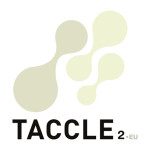Overview
In this activity, students will use their locality to develop their understanding of musical components. This activity assumes that students will have some knowledge and understanding of basic musical elements: timber/tone, pitch, structure, dynamics, duration, tempo, texture and silence. During the activity, they will investigate these further so that they can use them effectively during the composition tasks in consequent activities. Students begin the lesson by going on a Sound Walk around their locality.
Description
Before you start the sound walk, brainstorm with students the kinds/sources of sounds that they expect to hear e.g. traffic, birdsong etc. You shouldn’t need to spend much more than 5 minutes doing this but it will enable them to focus on what they can hear (rather than see) during the walk. If they aren’t already familiar with using the mobile devices or recording software allow them to experiment beforehand. We tend to use Audacity for recording on a device because it is so straightforward to use.
You will have planned your sound walk beforehand and considered things such an appropriate route, age of pupils etc. With very young students you can plan your route so that they stay on school grounds. Ask students to pay attention to all the different sounds they hear along the way. They should select and record the sounds they want (1-2 minutes for each sound is sufficient). On returning to class, they should upload the file to AudioBoo and share it on twitter, Facebook or a class blog. They should write a short paragraph to accompany each file explaining (in musical terms) the musical elements contained in the sound e.g. it is melodious, high pitched, has a loose structure, effective dynamics, rich texture etc.
Time needed 3-4 hours.
Resources
-
Devices with recording software and speakers.
-
Portable devices (1:2 or 1:small group).
-
AudioBoo and Padlet/Voicethread (or other app for brainstorming).
- AudioBoo is a website and smartphone application designed to allow users to post and share sound files on the AudioBoo website. Audioboo allows smartphone users to record and play back digital recordings of up to 5 minutes long which can then be posted on the AudioBoo website where users have their own pages. These recordings are referred to as ‘boos’ and photos can be added to a boo from the iPhone library or your Android phone along with a title, geotagging and a category tag. Uploading an Audioboo can be done with an iPhone or a Google Android Phone directly through the website or via Boomail, a service that lets you upload a boo via email. Boos can be shared on Twitter, Facebook and other social networks or embedded into websites, blogs and VLEs.
Hints and tips
- Try and ensure that each student has the opportunity to record.
- With younger students, you may wish to set up an AudioBoo account for everyone to use, rather than have them set up their own accounts.
Change here for
- VISUAL MEDIA: LINE 1 | STATION 6 | SFX IN ACTION
This post is also available in: Dutch




 English
English Nederlands
Nederlands Deutsch
Deutsch Italiano
Italiano Español
Español Português
Português Română
Română Cymraeg
Cymraeg
Un “premier pas” vraiment intéressant qui résonne, à Amiens (France), avec le projet RHIZOME de Nicolas Frize qui réalise une Création sonore pour accompagner le projet architectural de Renzo Piano (nouveau pôle universitaire). Les élèves, encadrés par leurs professeurs et avec l’aide du compositeur, iront écouter les bruits de la ville, les identifieront et enregistreront éventuellement leurs choix, pour participer au matériau musical de cette création de paysage sonore.